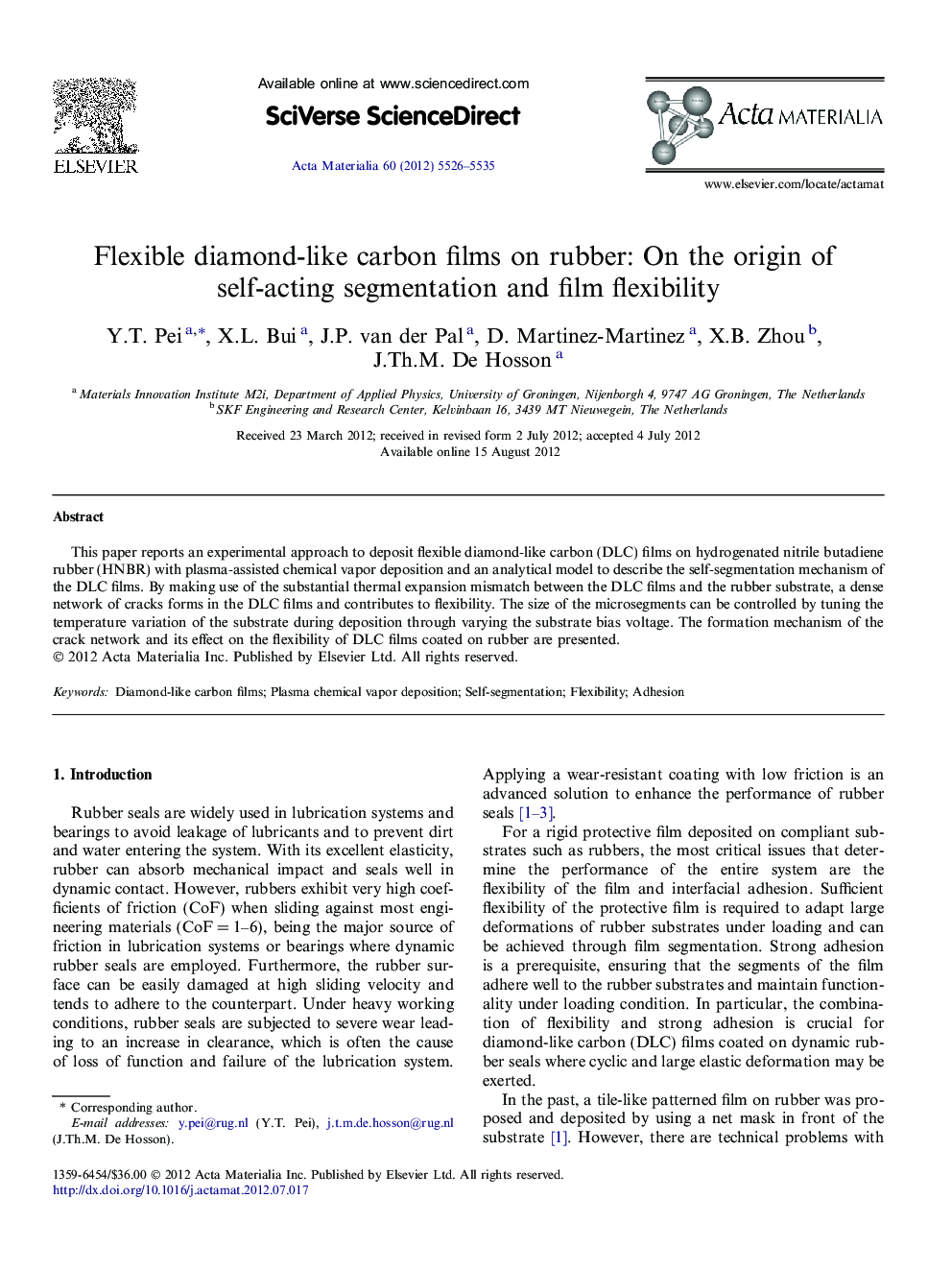| Article ID | Journal | Published Year | Pages | File Type |
|---|---|---|---|---|
| 10620397 | Acta Materialia | 2012 | 10 Pages |
Abstract
This paper reports an experimental approach to deposit flexible diamond-like carbon (DLC) films on hydrogenated nitrile butadiene rubber (HNBR) with plasma-assisted chemical vapor deposition and an analytical model to describe the self-segmentation mechanism of the DLC films. By making use of the substantial thermal expansion mismatch between the DLC films and the rubber substrate, a dense network of cracks forms in the DLC films and contributes to flexibility. The size of the microsegments can be controlled by tuning the temperature variation of the substrate during deposition through varying the substrate bias voltage. The formation mechanism of the crack network and its effect on the flexibility of DLC films coated on rubber are presented.
Related Topics
Physical Sciences and Engineering
Materials Science
Ceramics and Composites
Authors
Y.T. Pei, X.L. Bui, J.P. van der Pal, D. Martinez-Martinez, X.B. Zhou, J.Th.M. De Hosson,
